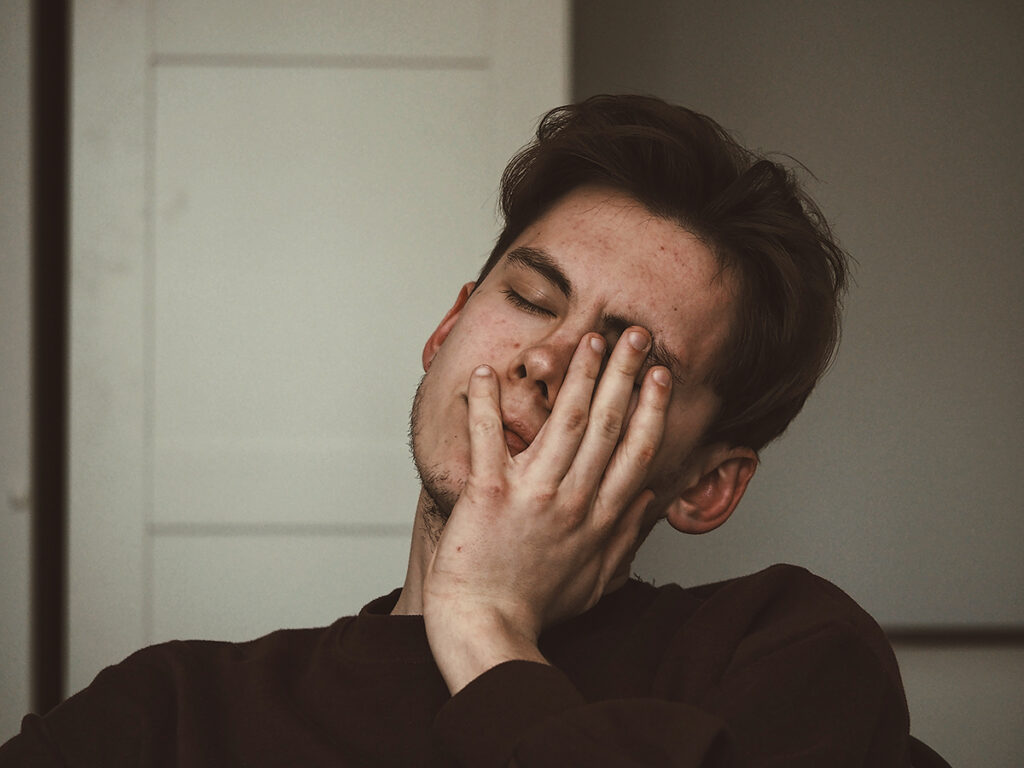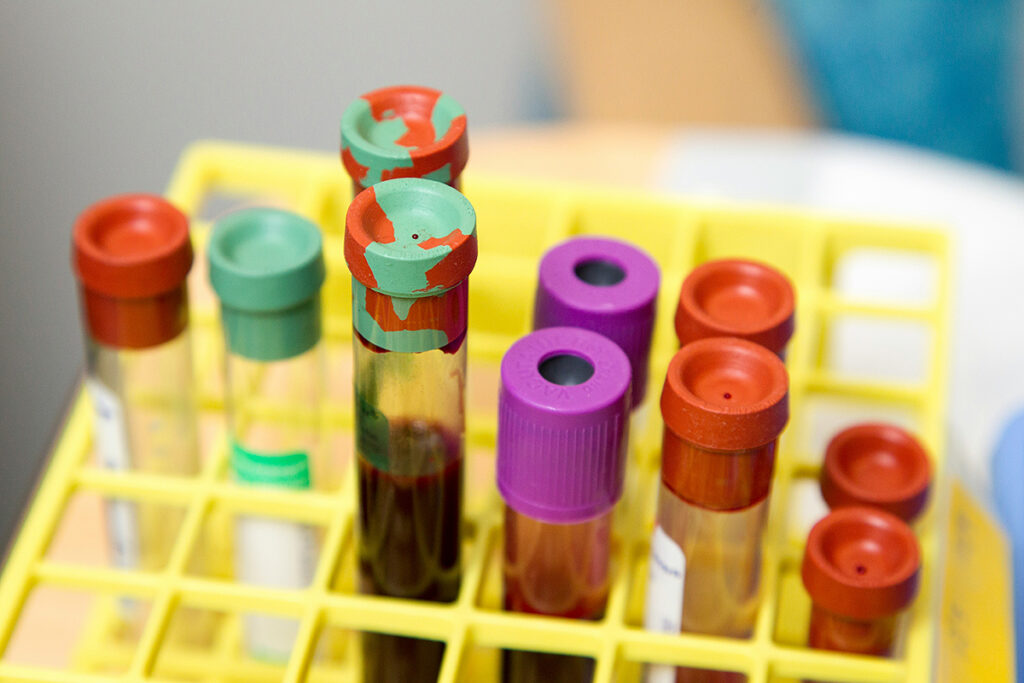For different coronavirus strains, the prevalence and duration of post-COVID syndrome differ. Among patients with post-COVID syndrome, 51-87% experience symptoms persisting for 2-6 months during observation, gradually decreasing within 6-12 months.
The most common symptoms include fatigue, shortness of breath, sleep disturbances, and cognitive impairments. Some patients report loss of taste and smell, cough, joint pain, chest pain, headache, hair loss, and diarrhea.
Cough and shortness of breath may persist 2-3 months after infection and decrease within 6 months. Fatigue and psychoneurological symptoms may stay longer. The “brain fog” reported by post-COVID syndrome patients may last up to 6-12 months.
Causes of Post-COVID Syndrome
Post-COVID syndrome may be triggered by:
- Acute tissue damage during COVID-19
- Prolonged presence of the coronavirus in internal organs
- Dysfunction of the immune system leading to autoimmune and chronic inflammation
- Chronic tissue hypoxia caused by impaired blood clotting
- Endothelial damage
Fatigue is the most common post-COVID symptom, associated with the dysfunction of the brain’s glymphatic system, responsible for waste removal. If this system malfunctions, cerebrospinal fluid stagnates, accumulating toxins in the central nervous system.
The coronavirus can affect skeletal muscles, causing inflammation of muscle fibers, neuromuscular junctions, and mitochondrial dysfunction. All of these factors contribute to weakness, fatigue, and exercise intolerance.
Shortness of breath can result from significant lung damage during COVID-19, endothelial damage, and the initiation of inflammatory reactions, leading to microvascular damage and pulmonary fibrosis.
Chest pain and arrhythmias after COVID-19 may be caused by infection of cardiac muscle cells and a local inflammatory response that promotes fibrosis.
Causes of cognitive and mental function impairments in post-COVID syndrome:
- The coronavirus penetrates the central nervous system (CNS), increasing the permeability of the blood-brain barrier. Inflammatory cytokines enter the CNS through the permeable barrier, inducing neuroinflammation.
- Patients with post-COVID syndrome exhibit altered brain microstructure, including reduced cortical thickness, changes in white matter microstructure, and decreased regional blood flow, especially in the frontal lobe and limbic system.
- Impaired taste and smell in post-COVID syndrome patients may result from the coronavirus entering olfactory cells, causing inflammation and altering taste thresholds.
Rehabilitation of Post-COVID Syndrome Patients
The most prevalent symptoms requiring rehabilitation in post-COVID syndrome patients include:
- Fatigue
- Exacerbation of symptoms after exertion, encompassing fatigue, pain, shortness of breath, cognitive impairments, and other symptoms following physical, mental, or emotional stress
- Shortness of breath
- Exercise intolerance
- Orthostatic intolerance, manifesting as dizziness, shortness of breath, pre-syncope, or fainting after prolonged standing
- Cognitive impairments
- Anxiety and depression
- Sleep problems
- Joint pain
A rehabilitation team may comprise physicians, physiotherapists, occupational therapists, speech therapists, psychologists, dieticians, and social workers.
Red flags such as reduced oxygen saturation during physical exertion and irregular heart rhythms must be ruled out at the outset of rehabilitation. If red flags are detected, addressing the underlying pathology takes precedence.
For assessing lung function, various methods are employed:
- Chest X-rays
- Spirometry
- 1-minute sit-to-stand test, 6-minute walking test, or cardiopulmonary stress test
Patients presenting with cardiac and pulmonary symptoms, like chest pain, shortness of breath, altered heart rate, or fainting, undergo:
- Electrocardiography (ECG)
- Troponin and NT-proBNP tests
- Echocardiography
- Other cardiological assessments for heart failure evaluation
After ruling out red flags, screening for orthostatic intolerance and symptom exacerbation after exertion should be conducted. The worsening of symptoms may occur immediately or 12-72 hours post-exertion, lasting from hours to weeks.
Patients experiencing symptom exacerbation after exertion should monitor the exacerbation’s onset, duration, and intensity and explore potential triggering factors. To reduce exacerbations, self-help methods such as breathing techniques, stress management, and lifestyle optimization are recommended. Abruptly intensifying rehabilitation should be avoided.
Orthostatic intolerance is identified through the orthostatic test, measuring changes in blood pressure and heart rate:
- Postural orthostatic tachycardia syndrome (POTS) – heart rate increases by more than 30 beats per minute after standing for over 30 seconds.
- Postural hypotension – systolic blood pressure drops by more than 20 mmHg after standing for more than 3 minutes.
Patients with orthostatic intolerance should maintain adequate fluid and salt intake and avoid triggering factors, such as prolonged standing, large meals, and heat. Compression stockings, abdominal binders, and pharmacological interventions can be utilized. Regular aerobic exercises in a non-vertical position, such as swimming, recumbent cycling, and weight-bearing exercises, are preferred to prevent orthostatic intolerance.
Patients with mental disorders and sleep disturbances are recommended psychotherapy and pharmacological therapy. Mindfulness-based stress reduction (MBSR) can be beneficial in reducing anxiety, depression, and sleep problems. Physical exercises also alleviate mental disorders. Cognitive stimulation, environmental adjustments, and cognitive rehabilitation exercises treat cognitive impairments.
Physical Therapy in Post-COVID Syndrome
Physical exercises are an integral part of rehabilitation after prolonged COVID-19 and in post-COVID syndrome. They help overcome fatigue, exercise intolerance, and shortness of breath, reduce mental health issues and sleep problems, and alleviate muscle and joint pain.
Poor exercise tolerance may result from reduced blood oxygen saturation. According to stress tests, patients with post-COVID syndrome have an average maximum oxygen consumption decreased by 4.9 ml/kg/min.
Patients with post-COVID syndrome are recommended physical therapy for 6-8 weeks. Physical treatment for post-COVID syndrome includes:
- Aerobic exercises
- Resistance training
- Respiratory muscle training
The efficacy of physical therapy is supported by a randomized controlled trial involving 39 patients with post-COVID syndrome after mild COVID-19. Over 8 weeks, the intervention group performed controlled aerobic and low to moderate-intensity resistance exercises, while the control group maintained general physical activity according to WHO recommendations without controlled sessions. The intervention group saw a 5.7% increase in average maximum oxygen consumption (VO2 max). The control group experienced no change. After 8 weeks, 42.1% of the intervention group reported symptom absence, compared to 16.7% in the control group. Physical exercises significantly improved the quality of life, reduced fatigue and depression, and improved functional status and cardiovascular and muscular strength compared to the control group.
Post-COVID Syndrome in Children
The rehabilitation of children with post-COVID syndrome includes:
- Aerobic exercises
- Resistance training
- Relaxation exercises
- Lung exercises
- Treatment for postural orthostatic tachycardia syndrome
- Cognitive training
- Psychological and social rehabilitation to return to school activities.
Useful article, necessary information? Share it!
Someone will also find it useful and necessary:



